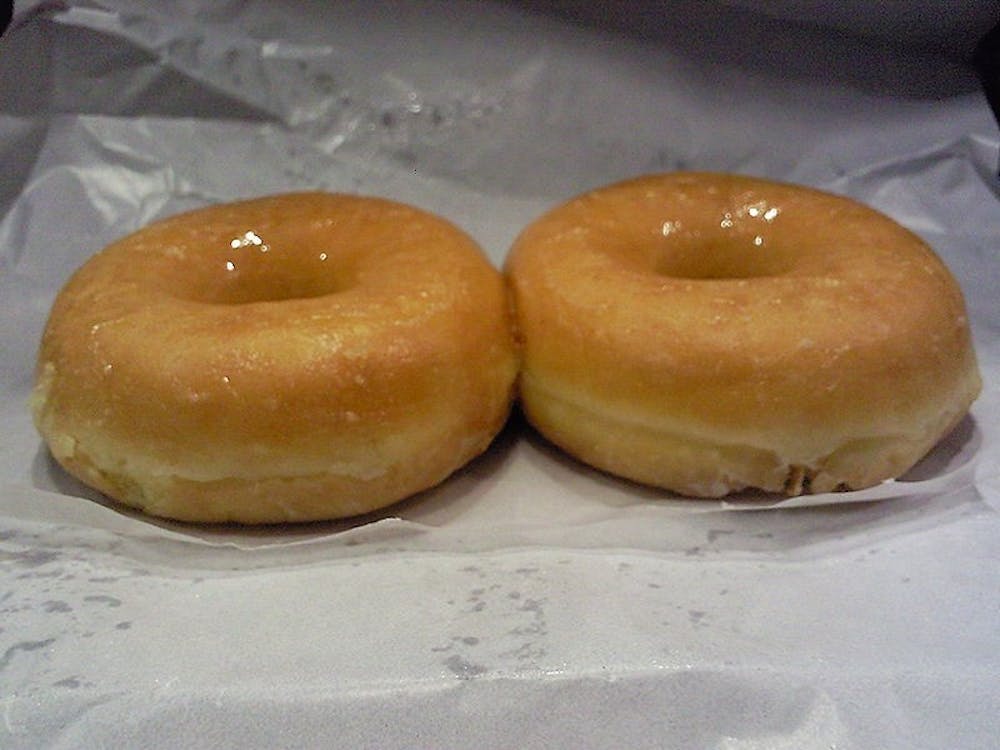In the mid–19th century, donuts were known to the Dutch as olykoeks, translating literally to oily cakes. These primitive pastries were sweet, fried in pork fat and often contained nuts in the center. In 1847, Elizabeth Gregory, a Dutch woman known for her delcious olykoeks, decided to call them "dough–nuts" instead. Shortly thereafter Elizabeth sent her son, Captain Hanson Gregory, on a voyage to America accompanied by her dough–nut recipe. Here, the story gets hazy.
Two legends involve the disappearance of the dough–nut’s center. The first describes Captain Hanson’s struggle to steer his ship while holding the dough–nut, causing it to slip and land on a spoke of the steering wheel, puncturing the treat.
The second, simpler account claims that Captain Hanson disliked nuts, thus removing them from the center and creating the hole — this one's boring, so we'll stick to the first.
In 1900, the doughnut suffered yet another loss when three of its middle four letters were robbed by writer George W. Peck in one of his many short stories.
It wasn’t until World War I that the donut emerged as an American staple. Later, Adolph Levitt created the first donut machine to satisfy the ever–increasing demand for the treat. In the 1940s and '50s, popular donut chains like Krispy Kreme and Dunkin’ Donuts were established. Today, the popularity of the mysteriously shaped pastry continues to soar.
—Samantha Field

